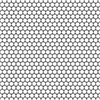Filter by
Shape
ID
Tolerance Rating
Hardness
Hardness Rating
Specifications Met
Fabrication
DFARS Specialty Metals
Mechanical Finish
Steel Grade
Yield Strength
Appearance
Finish
Raw Materials
Fastening and Joining
Power Transmission
Fabricating and Machining
Building and Machinery Hardware
Material Handling
Fluid Handling
Containers, Storage, and Furniture
Facility and Grounds Maintenance






















































